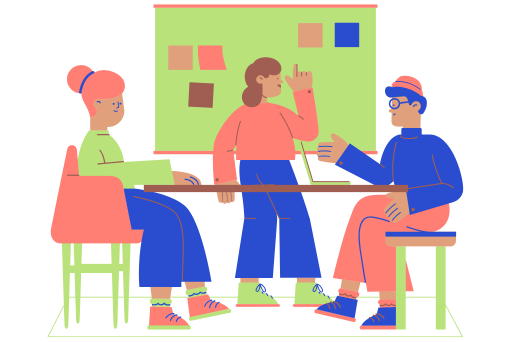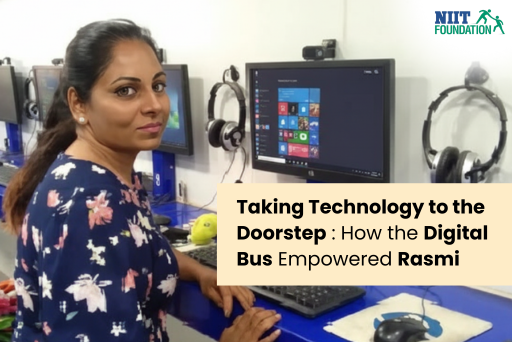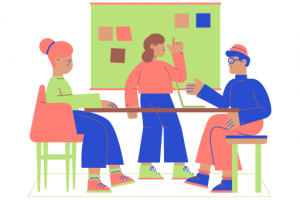India stands at a defining moment in its growth journey. With more than 65 percent of the population under the age of 35, the country’s demographic dividend carries tremendous potential, but this potential can only be realized when young people are equipped with skills that match the evolving demands of industry. As per the Ministry of Skill Development and Entrepreneurship (MSDE), India must skill more than 400 million people by 2025 to remain globally competitive. Addressing this gap between education and employability is exactly what NIIT Foundation’s network of 81 Skill Development Centers, spread across 28 states and 3 Union Territories, is working to achieve.
Since inception, NIIT Foundation has reached over 13.27 million learners, many of them from underserved communities. The centers operate as more than training spaces. They act as bridges to opportunity, offering practical and industry-relevant programs in digital literacy, retail, IT services, financial inclusion, and other high-demand areas.
Bridging the Employability Gap
India continues to face a significant employability gap, even though it produces millions of graduates every year. Studies show that only about half of all graduates possess job-ready skills. Digital fluency, communication skills, and vocational readiness are among the most visible gaps. The National Education Policy (NEP) 2020 calls for a fundamental shift from rote memorization to outcome-based learning, with vocational training integrated into mainstream education.
NIIT Foundation’s skilling model reflects this shift by combining classroom sessions with hands-on learning, career guidance, and placement support. Learners not only gain domain knowledge but also develop essential life skills such as communication, teamwork, financial literacy, and digital safety.
Enrolment Growth and Expanding Reach
The Foundation’s enrolment numbers highlight the scale and consistency of its impact.
Enrolment grew by nearly 24% from 2022–23 to 2023–24, with the proportion of male and female learners each increasing by about 25%. From 2023–24 to 2024–25, total enrolment rose by approximately 13%, as male learners increased by around 14% and female learners by almost 12%. This consistent year-on-year growth underscores the Foundation’s expanding reach across its centers. This steady growth demonstrates the rising demand for employability-focused training and the trust communities place in NIIT Foundation.
Strengthening Local Employment Ecosystems
India’s diversity requires training programs that match local realities instead of adopting a one-size-fits-all model. NIIT Foundation ensures that each center tailors its programs to local job opportunities. In Haryana, this includes data entry and e-commerce support. In Rajasthan, the focus is often on retail roles. In Assam, youth receive training in digital marketing. Training is always linked to real opportunities in the learners’ immediate geography, making the transition from training to employment much smoother.
Placement figures further highlight the impact of this localized skilling approach.In 2022–23, the Foundation enabled more than 41,500 placements, including 23,200 male and 18,300 female learners. In 2023–24, placements rose to 74,100, with around 40,700 male and 33,400 female beneficiaries. These outcomes show how the Foundation is strengthening both youth employability and employer access to skilled talent.
Bridging the Digital Divide
The State of India’s Digital Economy 2025 Report by ICRIER highlights a persistent digital divide. Only 10 to 20 percent of rural residents use the internet, compared to 40 to 50 percent in urban areas. By building digital capacity in these communities, NIIT Foundation is helping bridge the rural-urban opportunity divide and creating more equitable access to the digital economy.
The Foundation’s programs align closely with national priority areas such as Skill India, Digital India, and NSDC initiatives. While the Skill India Mission has trained over 1.5 crore youth since 2015, the World Economic Forum’s Future of Jobs Report 2025 warns that 44 percent of workers’ skills may be disrupted due to technological advancements.
This makes continuous reskilling essential. NIIT Foundation supports both first-time job seekers and experienced workers who require new skills to stay relevant in an economy shaped by artificial intelligence, automation, and rapid digitization.
Stories of Transformation
Beyond numbers, the real impact of the Foundation is reflected in the lived experiences of learners. A young woman from Lucknow secured her first job at an e-commerce firm after completing a digital literacy course. A school dropout in Guwahati now manages digital payments for local shops after participating in a vocational program. These stories show how access to skilling can transform lives by opening doors to economic independence and renewed confidence.
The Road Ahead
As India works towards becoming a seven-trillion-dollar economy by 2030, the need for a future-ready workforce will continue to grow. NIIT Foundation’s community-led, technology-integrated skilling model demonstrates how structural challenges related to employability, inclusion, and digital access can be addressed at scale. By combining local partnerships, industry alignment, and learner-centric methods, these Skill Development Centers are shaping a workforce that can participate fully in India’s growth story.
Skilling is not just an educational intervention. It is an investment in India’s most valuable resource: its people.















